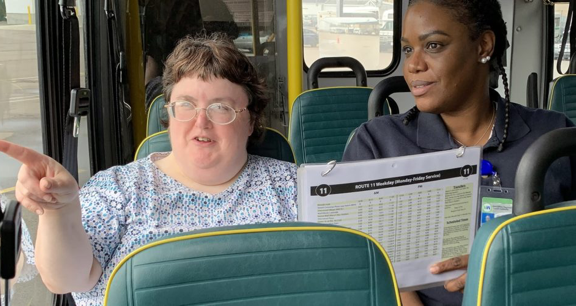The following is the last in a series of seven blogs on demand response transportation design and operations from guest blogger Steve Yaffe. In this last blog of the series, the need for transactional data specifications to efficiently provide demand response transportation. Many older adults and people with disabilities have difficulty in reaching medical appointments,…
The following is the fourth in a series of blogs on demand response transportation design and operations from guest blogger Steve Yaffe. This blog focuses on the stages of procuring technology for scheduling demand response transit. Based on experience scheduling demand response transit manually and with software, pleased be assured that using technology is the…
The following is the fifth in a series of blogs on demand response transportation design and operations from guest blogger Steve Yaffe. In this blog, will discuss using a Request for Proposals (RFP) a method for procuring transit technology. As discussed in my previous blog, a Request for Proposals (RFP) is the preferred…
The following is the sixth in a series of blogs on demand response transportation design and operations from guest blogger Steve Yaffe. This blog highlights how to prepare a Request for Proposals in procuring transit technology. The technologies requested in a RFP Scope has to be scaled in two directions: the functionalities needed and…
The following is the third in a series of blogs on demand response transportation design and operations from guest blogger Steve Yaffe. This blog highlights the importance of an efficient transit scheduling system. Efficient and effective scheduling enables the transportation provider to stay within budget while maintaining the loyalty of funding agencies. While efficient scheduling…
In our last NADTC blog , guest blogger Steve Yaffe discussed how more paratransit rides can be provided within budgetary limitations if paratransit operations and accounting are structured as a shared service, with costs proportionately allocated to each funding source. In this second blog of the series, we continue to look at paratransit cost-allocation, with a specific focus on how…
Thank you to guest blogger Steve Yaffe for writing this month’s blog series on demand response transportation design and operations. The following is the first in a series of seven blogs highlighting the need for cost allocation, transit scheduling and technology. This blog focuses on how more paratransit rides can be provided within budgetary limitations if…
Thank you to AARP and their Driver Safety program for providing this blog on how innovation and technology can improve driver safety for older adult populations. How can drivers remain confident as they age? That’s a critical question that faces drivers 50 and older. AARP, through its 40-year-old safe-driving program, AARP Driver Safety, recently worked with…
In our last NADTC blog, guest blogger Steve Yaffe discussed the new mobility options we’ve seen enter the transportation arena in recent years and ways that barriers could be addressed to make those options more accessible. In this blog, we continue NADTC’s look at transportation accessibility for travelers with disabilities, with a specific focus on…
Thank you to guest blogger Steve Yaffe for writing this month’s blog about newer transportation options that have become popular over the past five years and how barriers can be addressed so that options can be more accessible for older adults and travelers with disabilities. New Mobility Services have three major accessibility barriers. These barriers…
